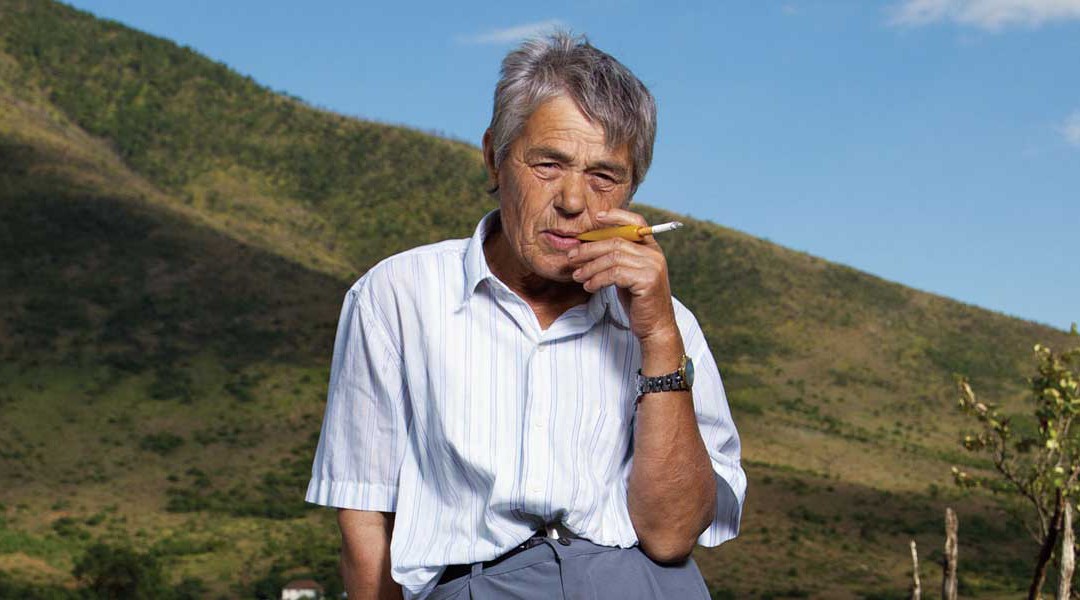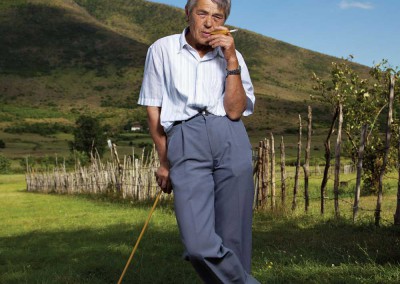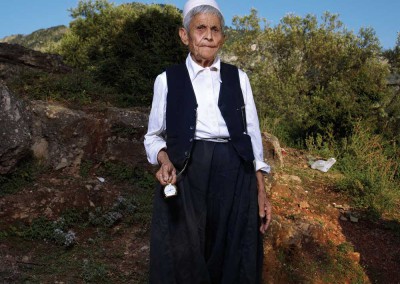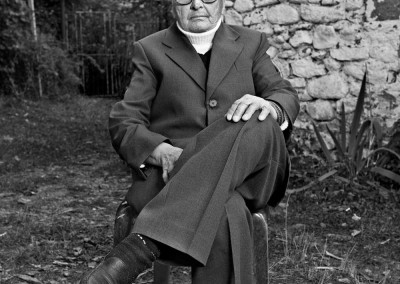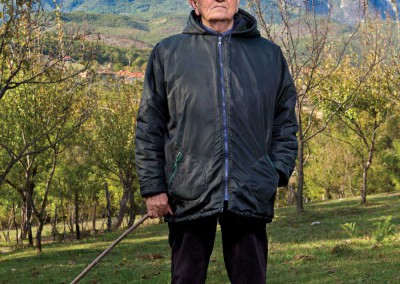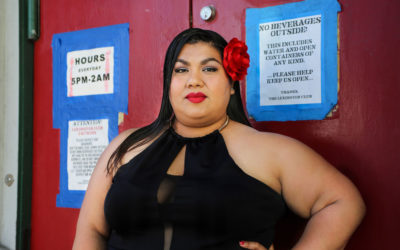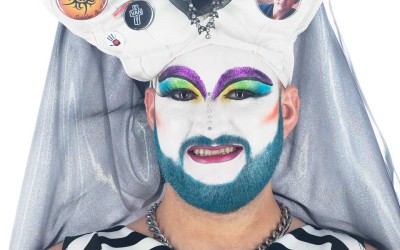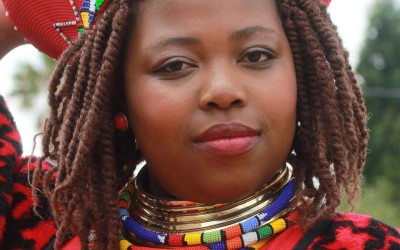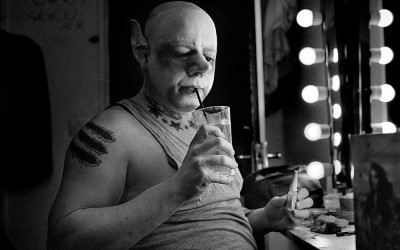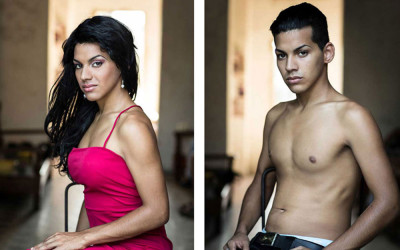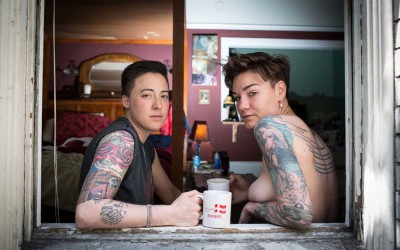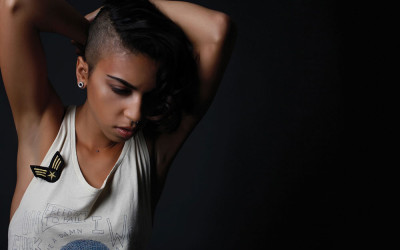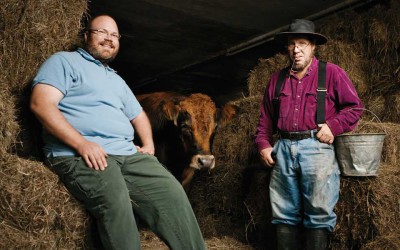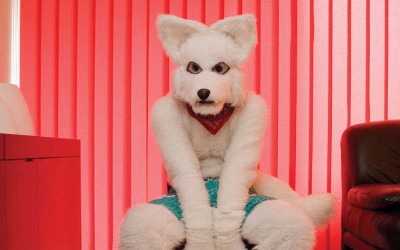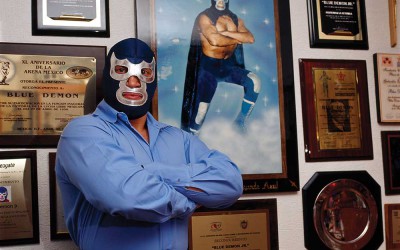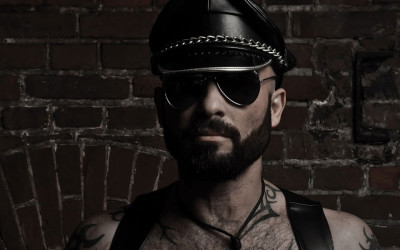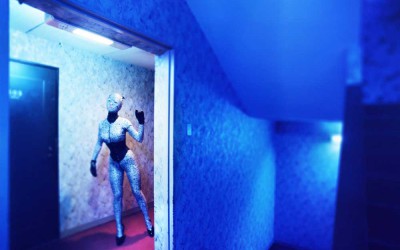Sworn Virgins
Text JF. Pierets Photos Jill Peters
Northern Albanian women, faced with a culture that subjugates females, live and dress as men in order to provide for their families. These sworn virgins took a vow of chastity, wear male clothing and live as men in the patriarchal northern Albanian society. In an ongoing series, photographer Jill Peters has captured the fascination of a tradition dating back hundreds of years.
When and where did you come up with the idea of making this series?
In late 2008 I was reading a book written by Serena Nanda about gender diversity around the world, and came across a chapter about the Sworn Virgins of Albania. I was intrigued by the idea of such a tradition. I knew nothing about them, nor had I ever heard of their existence. The general consensus that they would soon be dying out made me act quickly. I had to meet one and I was determined to photograph at least one. This idea soon expanded to making a documentary film and I put a crew together. We all traveled to Albania in July 2009 and some of these portraits were taken then. I returned again in late 2011 to continue the project.
Was it easy to find these women?
It was not easy to find them. The Sworn Virgins are very proud but extremely private people. The majority live in very small secluded villages not often seen by outsiders. They remain suspicious of foreigners and their trust must be earned over time. Once they accept you however, they are talkative, warm and hospitable, often offering coffee, tea or cigarettes to their guests.
They live as men yet I guess everybody in the village knows they are women – otherwise you would not have found them. Or am I wrong?
The most remarkable aspect of this tradition is that everyone knows they are women. In this culture however, the way one dresses dictates how they are perceived. A woman who cuts her hair short, wears men’s clothes and adopts masculine traits is accepted as a man. Because this practice has a long history and is associated with family honor, inherited wealth and clan survival, the burneshas are well respected and regarded as a benefit to the family. For the most part, villagers in these areas are so accustomed to knowing a Sworn Virgin, or “burnesha”, first hand that they often wonder what all the interest on our part is about.
What do they think of this paradox?
I was drawn to this project because of the paradox of a strident patriarchal society accepting a woman who switches her gender by choice. I want to make it clear if it isn’t already, that this has nothing to do with sexual identity. As westerners we tend to jump at the chance to label someone gay or straight because those seem like the only two options in our culture. The remarkable thing about these women is that they are beyond labels.
‘In this culture however, the way one dresses dictates how they are perceived.’
I read that this decision is more related to gender roles than to sexuality. Nevertheless they have to remain virgins. Why is that?
I believe swearing to remain a virgin for life and thus avoiding any kind of romantic relationship altogether was their only way of circumventing such labels. Regardless of any orientation, they could not be with a man and still be considered a man. Nor could they be with a woman, as that would technically be a homosexual relationship since they were known to be biologically female. Also, the Kanun, which is the tribal code still influencing many in the rural north, states that a woman is only worth half as many bags of grain as a man, but a virgin is equal to the value of a man. I find it sad in the broader scope, as a woman, that this extreme sacrifice was necessary in order for a woman to exercise her free will. Because a woman wears a pair of pants she is “suddenly” deemed capable of inheriting property, driving a car or running a business. It simply amazes me. I think the injustice in that is evident to everyone today.
Some women became burneshas when they did not want to marry the man their family had chosen for them. Again this is a sad reflection on what it meant to be a woman in those times. Once the vow is taken though, it is forever. To go back on a vow would be to disgrace the family and could result in a deadly feud between the two families that could perpetuate generations of honor killings. I was relieved to discover that for the most part, the burneshas did not regret their decision and insist they have led happy lives. Most would make the same choice given the same circumstances. They are pleased with the progress women have made in the past 50 years and understand why it is a custom that is dying out.
You said in an interview that this is an ongoing project. What are your plans?
My future plans for the project include finishing my documentary film. I’m proud to say I have a good relationship with my subjects and have developed a level of trust over the years.
Related articles
Femme Space
“If you don’t see femmes as queers, it’s because you choose to not see us. You are invested in our erasure. We are here. We have always been here.” A strong quote, coming from Dulce Garcia, AKA Fierce Femme, one of the participants in Femme…..
Unveiled
Belle Ancell is a queer community photographer living in Canada. Amongst her series there is “Unveiled”, portraits of the Vancouver Sisters of Perpetual Indulgence. In-depth photographs and representations of people who are, just like…..
Chubby Vogue Divas
Chubby Vogue Divas is an ongoing photography project by artist and activist Charmain Carrol. Her being an activist started in the 90s when black lesbians went through a phase where their parents were not accepting their children’s sexual orientation…..
Boystory
Danish-born Arrevad spent five years documenting the international, subterranean world of male performers, burlesque, go-go dancers, cabaret singers and porn stars. The journey would take him to New York, Berlin, Paris,…..
Reassign
Born in Chile, raised in Europe, and with an advanced training in photography, Claudia González has spent the last 2 years working on her project called Reassign. In order to make this series, Gonzàlez joined forces with Mariela Castro’s sexuality…..
Meg Allen
In her series ‘Butch’, photographer Meg Allen shows a variety of women who fall under the category of more masculine than feminine. Over the years people have been given different names to lesbians, and being butch is yet another flavor…..
Kanithea Powell
‘Well, these aren’t your typical flannel, mullet, boot wearing butches. This new art book pushes the Butch-definition beyond its seams. Packed with fashion forward pictures that are vivid, dramatic and provocative. These gender-bending bois will……
Gay in America
Scott Pasfield celebrates diversity in this first-ever photographic survey of gay men in America. Stereotypes are laid to rest and an intimate, honest picture of contemporary gay life is revealed through stunning personal portraits and narratives of 140 gay…..
Furries
From 2003 until 2008, Charlotte Lybeer photographed gated communities and actual “theme parks” in the US, South Africa, Europe, China and the Arab Emirates. ‘The success of these ‘enclaves’ proves that in a society without boundaries, we still…..
Masked Superstars
For thirty years photographer Lourdes Grobet has penetrated the world of one of the most popular sports and deep-seated traditions in Mexico: Lucha Libre-wrestling. She documented the lives of the fighters inside and outside of the ring. Lucha Libre…..
Bears
Heavily set, rugged and fiercely hyper-masculine, these are males who convey strength, identity and are an ever-growing subculture of the lesbian, gay, bisexual and transgender (lgbt) population. Welcome to the “bear” community. Evolving in the…..
The Tokyo Hotel Story
Photographer Nathalie Daoust first broke onto the scene in 1997 while photographing the themed rooms of the Carlton Arms Hotel in New York. This project, her first solo exhibition, was published into a book, New York Hotel Story. Since then…..
